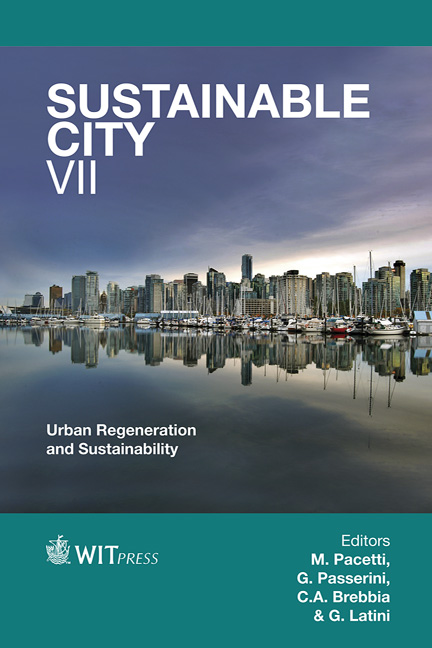Sustainable Historic Waterfront Development: Approaches And Dilemma Of Two UNESCO World Heritage Sites In Malaysia
Price
Free (open access)
Transaction
Volume
155
Pages
12
Page Range
745 - 756
Published
2012
Size
1,664 kb
Paper DOI
10.2495/SC120632
Copyright
WIT Press
Author(s)
S. Shamsuddin, A. B. Sulaiman, N. S. A. Latip, R. C. Amat & N. A. Alias
Abstract
Urban waterfronts are unique cultural resources which have great potential to improve economic development, public enjoyment and civic identity. This issue is more predominant in the historic areas where the once active waterfront ceases to function in its traditional capacity. George Town and Melaka were both jointly awarded the UNESCO world heritage site in 2008 because of the similarity in issues and the functions they served in the past. The waterfronts of the cities were included in the heritage sites’ boundaries and the approaches taken to the waterfront development have an important influence on their sustainability. This paper examines the approach to waterfront regeneration in the major cities of Malaysia including the two aforementioned historic cities. A mixed method approach has been adopted for the research using field observations, morphological study, in depth interview, questionnaire survey and content analysis of policies in government documents to collect data for the analysis. The research attempts to compare the differences in approaches between the two heritage cities and their implications in relation to their sustainability. The research discovers that the level of contextual integration is an important consideration for sustainable waterfront regeneration for the historic cities. Keywords: waterfront, sustainable development, urban design and public place. 1 Introduction Urban waterfronts are the types of cultural resources that have unique potential to improve economic development, public enjoyment and civic identity.
Keywords
waterfront, sustainable development, urban design and public place.





